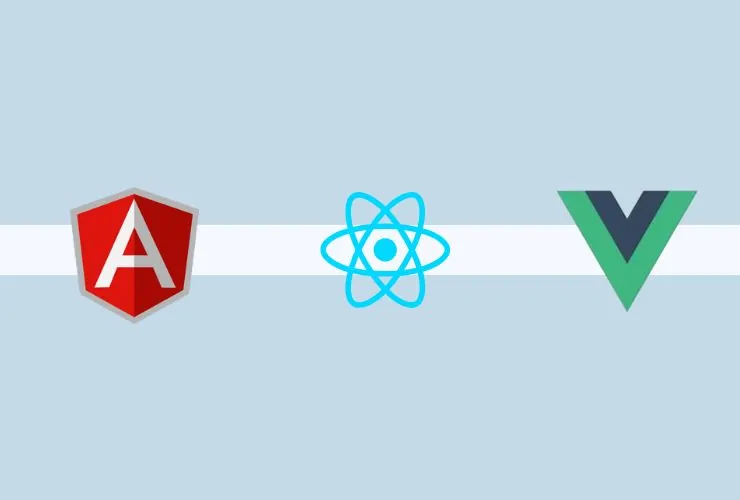In contemporary web development, React and Next.js are frequently mentioned when discussing the creation of fast, scalable, and maintainable applications. Both technologies are closely related but are used for different purposes and provide different benefits based on the type of your project. Although React is a mature JavaScript library with sole concentration on constructing dynamic UIs, Next.js is a full-stack React-based framework that adds advanced features like routing, server-side rendering, static site generation, and performance optimization.
React vs Next.js: Which is best?
Choosing React or Next.js in 2025 has a gigantic effect on the speed, flexibility, SEO, and scalability of your application. So, which one is best for you? Let’s dive into both in depth.
What is React?
React is an open-source JavaScript library developed and maintained by Facebook. It is primarily used for the construction of component-based user interfaces for single-page applications (SPAs). React allows developers to build reusable UI components and manage state in a way that is efficient, thus making it a strong choice for building highly interactive and responsive front-end applications.
One of the greatest strengths of React is its sheer flexibility. Since React is not a full-stack framework, programmers have full control over how they implement tools for routing, state management, and backend services. But what this liberty also means is that programmers must patch together numerous libraries in order to have a complete application, whether it be libraries such as React Router for navigation or NextAuth for authentication.
What is Next.js?
Next.js is a React framework that was started by Vercel and applies a production-ready framework to build production-grade apps. It enforces key features which are not natively built into React, including file system routing, SSR, SSG, and API routes. These features allow for easier SEO, enable the app to be usable, and help developers.
Next.js simplifies the development and setup process so that developers can easily build extensively optimized web applications with minimal configuration. It has native support for TypeScript, image optimization, performance analytics, and serverless functions, all of which make it the ideal pick for applications today.
| Feature | React | Next.js |
|---|---|---|
| Type | Library | Framework |
| Routing | Manual (via React Router) | Built-in |
| SSR/SSG | Not available by default | Built-in |
| SEO Optimization | Needs configuration | Optimized by default |
| Flexibility | Highly flexible | Opinionated, but efficient |
| Learning Curve | Moderate | Slightly steeper due to added features |
| Best For | SPAs, high flexibility apps | SEO-driven, performance-critical apps |
React vs. Next.js: Key Differences
When comparing Next.js and React, remember that React is merely the view layer, while Next.js is a whole framework that incorporates an enormous range of tools to build full-stack applications.
React doesn’t contain routing as an inherent feature and requires libraries like React Router. However, Next.js provides auto-routing based on files, and this makes routing between pages convenient.
Rendering features also differ. React supports client-side rendering, while Next.js supports multiple rendering techniques like SSR, SSG, and ISR (Incremental Static Regeneration). These rendering features optimize both performance and search engine optimization.
SEO is another important difference. React requires additional configurations and workarounds to support good SEO practice, while Next.js supports SEO inherently because of its rendering features and metadata handling.
Flexibility is where React comes out on top. It allows you to choose each piece of your application stack. Next.js, on the other hand, is opinionated but achieves efficiency and speed utilizing its convention-over-configuration tactic.
Performance typically becomes better in Next.js owing to pre-rendering as well as automatic code-splitting that helps in enabling faster page loading and reducing time to first byte (TTFB).
When Should You Use React?
React is the way to go if you’re building a complicated SPA or dashboard application where SEO isn’t a priority. If your team enjoys configuring and handling every aspect of the application—ranging from routing to rendering strategy—React provides you with the flexibility to do so. It’s great for developers who enjoy working with a customized toolchain and have complete control of the architecture.
When Should You Use Next.js?
Next.js is the perfect choice when SEO, fast load time, and rapid development are critical. It is most suitable for eCommerce websites, blogs, news sites, SaaS websites, and landing pages where search engine visibility and user experience are critical. With its automated image optimization, analytics, and hybrid rendering, Next.js accelerates time-to-market while reducing scalability pain.
Final Thoughts
In 2025, the distinction between front-end libraries and full-stack frameworks becomes less clear, and the decision to use React over Next.js relies heavily on your project’s purposes.
React provides full control and flexibility and is ideal for use in projects where custom architecture is required or projects targeting browser-based rich interactivity. Next.js, on the other hand, simplifies things to develop by offering a highly powerful framework out of the box that prioritizes performance, SEO, and ease of deployment.
If you’re building a solo SPA and must customize each aspect, React would be your first option. Yet, if you’re looking for a production solution with the best SEO and minimal setup, Next.js is likely the smarter choice. Both frameworks are highly capable and well-maintained, and ultimately, your choice will depend on your team’s skill level, project size, and business needs.














